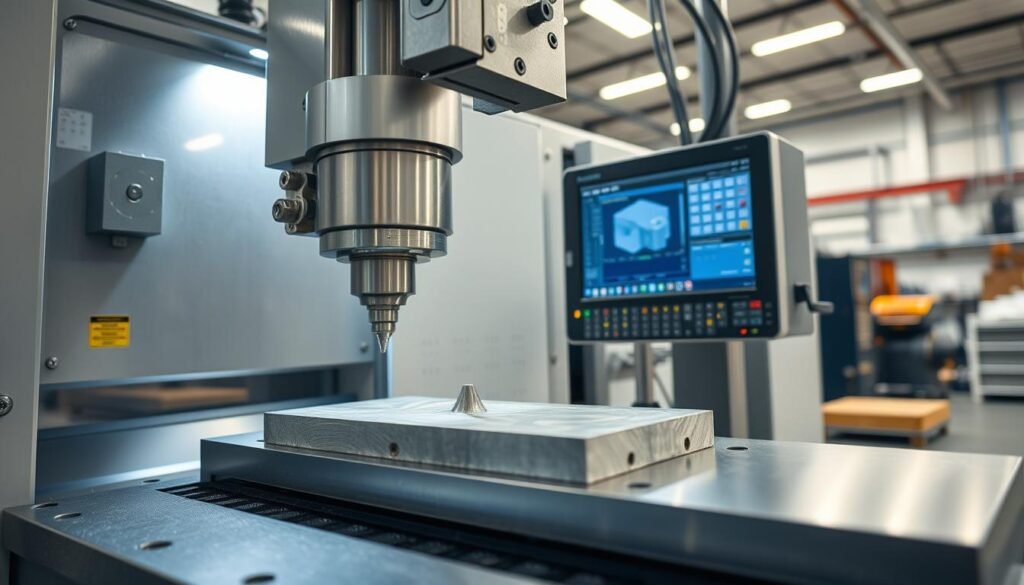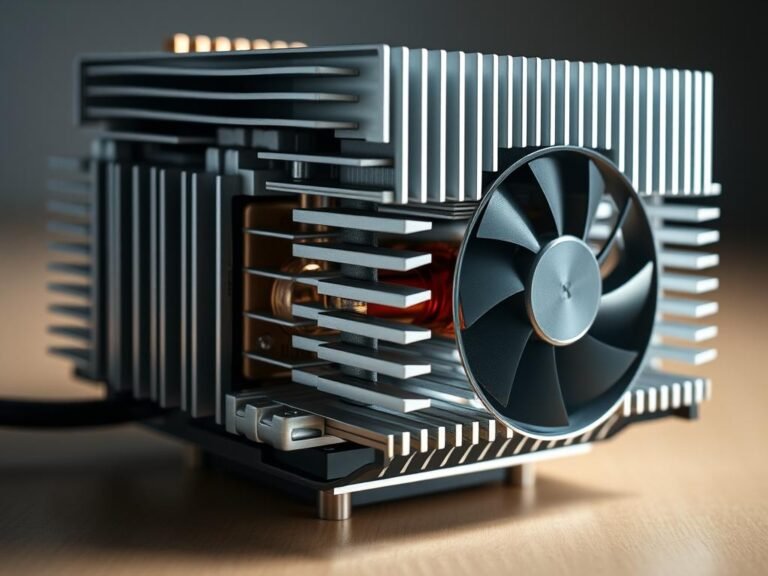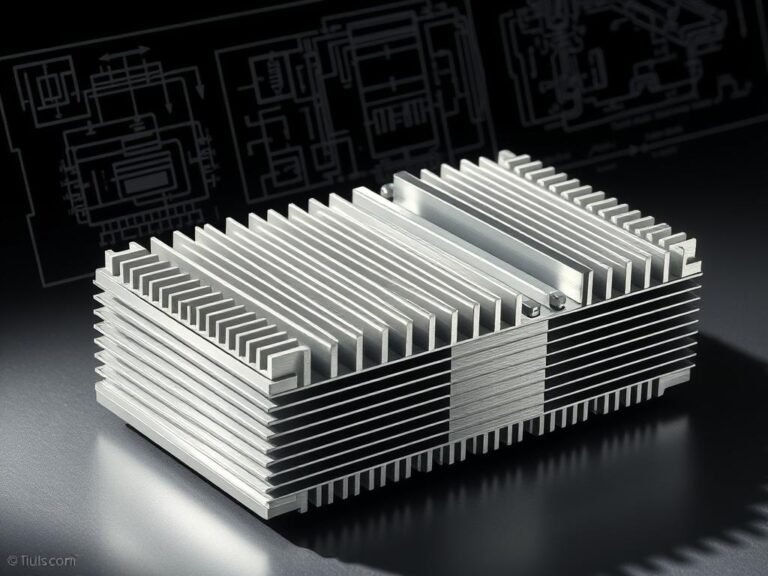CNC milling is a revolutionary machining technology in the modern manufacturing industry. This computer-controlled manufacturing enables precise and complex processing of materials such as metal, wood, and plastic with the highest accuracy.
The technology of CNC milling fundamentally differs from traditional manual milling methods. By using computer-controlled systems, workpieces can be produced faster, more accurately, and more efficiently.
Modern industrial companies use CNC milling machines in various production areas to develop high-quality components and tackle complex technical challenges.
Definition of CNC milling
CNC milling is a highly precise computer-controlled milling method that plays a crucial role in the modern manufacturing industry. This technology uses computer-controlled milling machines to process workpieces with the highest accuracy.
The CNC definition describes an automated manufacturing process in which a computer precisely controls the movements and cutting parameters of the milling tool. Core features of this precision machining are:
- High-precision material processing
- Computer-controlled tool guidance
- Precise control of the cutting movements
The main difference from traditional milling methods lies in digital control. Computer-controlled milling machines can produce complex geometric shapes with a precision of micrometers that would not be possible manually.
| Feature | Traditional milling | CNC milling |
|---|---|---|
| Precision | Medium accuracy | Highest precision |
| Control | Manual | Computer-controlled |
| Complexity | Limited | Very complex possible |
The technology enables reproducible manufacturing of workpieces with minimal tolerances, making it essential for industries such as mechanical engineering, aerospace, and medical technology.
Computer Numerical Control in CNC milling
The CNC control system revolutionized modern manufacturing technology through its precise numerical control of machine movements. Computer-controlled systems enable incredible accuracy in machining various materials.
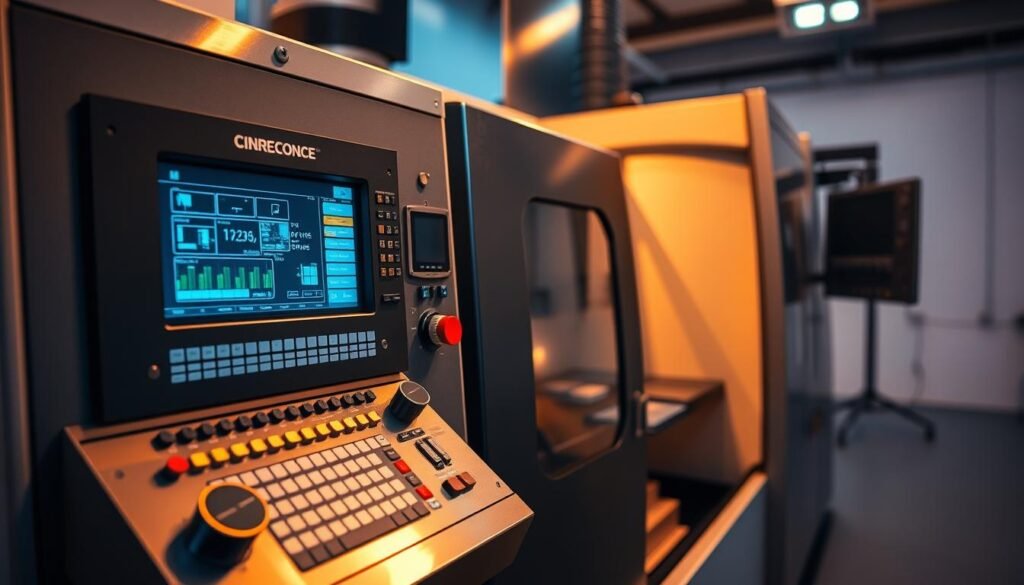
The development of computer control is based on several key elements:
- Digital programming of movement sequences
- Precise coordinate control
- Real-time commands for machine tools
Modern CNC control systems differ fundamentally from older manual methods. They transform complex digital design data into precise mechanical movements.
The numerical control operates by precisely converting computer commands into geometric positions. Each axis movement is calculated and executed with millimeter accuracy.
"The computer control has elevated industrial precision to a completely new level."
The advantages of CNC control include:
- Highest manufacturing accuracy
- Reproducible results
- Complex editing options
By integrating advanced software solutions, modern computer control enables unprecedented control over manufacturing processes.
Milling process in CNC milling
The CNC milling process is a precise method of machining technology, in which materials are processed through computer-controlled movements. This state-of-the-art process enables extremely accurate material processing across various industries.
The main steps of the CNC milling process include:
- Tool selection according to the processing material
- Programming of movement sequences
- Precise positioning of the workpiece
- Gradual material removal
During the CNC milling process, several factors play a crucial role:
| Factor | Meaning |
|---|---|
| Cutting speed | Determines processing quality and tool wear |
| Coolant | Reduces tool temperature and improves surface quality |
| Tool geometry | Affects cutting performance and material removal |
The computer-controlled precision enables extremely complex machining with the highest repeatability during the CNC milling process. Modern CNC systems can maintain tolerances within the micrometer range, which makes it an indispensable process in industrial material processing.
How CNC milling works
The CNC operation revolutionizes modern manufacturing technology through precise and automated processing. These highly advanced machines transform digital design data into exact mechanical movements.
The core of the machine control is based on complex computer-aided systems that control every movement of the milling tool with millimeter precision.
CAD/CAM-System
The CAD/CAM system forms the core of CNC technology. It enables seamless conversion of digital 3D models into precise manufacturing instructions:
- Digital construction of the workpiece
- Automatic generation of processing paths
- Optimization of the cutting parameters
Control of the milling head and workpiece
Precision machining is achieved through a sophisticated coordinate system that precisely controls movements.
| Axle | Function | Range of motion |
|---|---|---|
| X-Achse | Horizontal movement | Links-Rechts |
| Y-Achse | Vertical movement | Vor-Zurück |
| Z-Achse | Depth movement | Auf-Ab |
Through the complex interaction of these axes, highly precise machining of workpieces is made possible.
Applications of CNC milling
CNC applications play a crucial role in modern industries. Manufacturing technology has been revolutionized through CNC milling, enabling precise machining in various sectors.
The industrial use of CNC milling machines spans several high-precision areas that require complex manufacturing processes.
Aerospace
In the aerospace industry, CNC milling technologies are used for highly specialized components. The manufacturing of:
- turbine blades
- Aircraft structural elements
- Lightweight components
Automobile industry
The automobile manufacturing uses CNC milling machines for precise machine parts and prototype creation:
- Motor components
- Body styles
- Precision tools
Medical technology
Medical applications require the highest precision. CNC milling enables the production of:
- Surgical instruments
- Prostheses
- Orthopedic implants
| Industrial sector | Typical CNC milling applications | Precision requirements |
|---|---|---|
| Aerospace | turbine blades | Extremely high |
| Automobile industry | Motor components | Very high |
| Medical technology | Surgical Instruments | Highest precision |
The diversity of CNC applications underscores the importance of this manufacturing technology in modern industries.
Advantages of CNC milling
CNC milling revolutionizes the modern manufacturing industry through its outstanding technological advantages. The CNC benefits enable companies to achieve precise and efficient production methods that far surpass traditional manufacturing techniques.
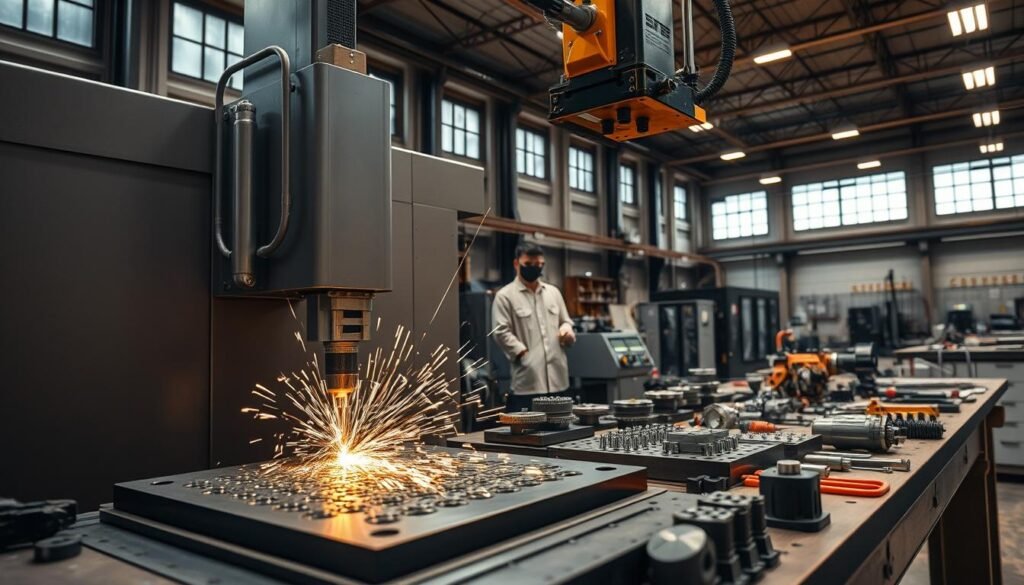
The main advantages of CNC milling can be divided into several core areas:
- Maximum manufacturing efficiency
- Outstanding quality improvement
- Precise processing of complex geometries
- Minimal error rates
Precision at the highest level
CNC milling machines achieve incredible accuracy of up to 0.01 mmThis microscopic precision guarantees consistent product quality and drastically reduces rejection rates.
Repeatability
The manufacturing efficiency is significantly improved through the consistent reproducibility of workpieces. Each produced part exactly meets the specified requirements.
| Manufacturing method | Precision | Production speed |
|---|---|---|
| Traditional processing | ± 0.1 mm | Low |
| CNC milling | ± 0.01 mm | Very high |
Efficiency and complex shapes
The quality improvement through CNC milling enables the production of highly complex geometries that would not be achievable with conventional methods. Modern CNC systems can precisely coordinate multi-axis movements.
Axes in CNC milling
CNC axes form the core of modern milling machines and enable precise movement freedom during the machining process. The number of CNC axes determines the complexity and flexibility of manufacturing capabilities.
In multi-axis milling, there is typically a distinction between different axis configurations:
- 3-Achsen-Fräsmaschinen
- 4-Achsen-Fräsmaschinen
- 5-Achsen-Fräsmaschinen
Each axis configuration offers different processing options and freedom of movement for complex geometric shapes.
| Axis type | Freedom of movement | Scope of application |
|---|---|---|
| 3-Achsen | X, Y, Z axis | Simple geometric shapes |
| 4-Achsen | X, Y, Z + rotation axis | More complex processing |
| 5-Achsen | X, Y, Z + 2 rotation axes | High-precision and complex parts |
The choice of the right axis configuration depends on the specific requirements of the manufacturing process. As the number of axes increases, the precision and flexibility of CNC milling machines improve.
Summary of CNC milling
CNC technology has revolutionized modern manufacturing. Precise machining methods enable companies to produce complex components with the highest accuracy. Milling machines play a central role in various industries such as automotive, aerospace, and medical technology.
The future of milling lies in automation and digitalization. Modern manufacturing processes utilize advanced CNC systems that can produce complex geometric shapes with minimal human intervention. The technology combines computer-controlled control with highly precise mechanical movements.
Key elements such as multi-axis machining, CAD/CAM integration, and advanced control software define the current state of CNC milling technology. Companies are increasingly investing in these technologies to improve production efficiency and optimize manufacturing costs.
CNC milling remains a key element of industrial production. The continuous development of the technology promises further innovations in precision, speed, and flexibility for future manufacturing applications.
